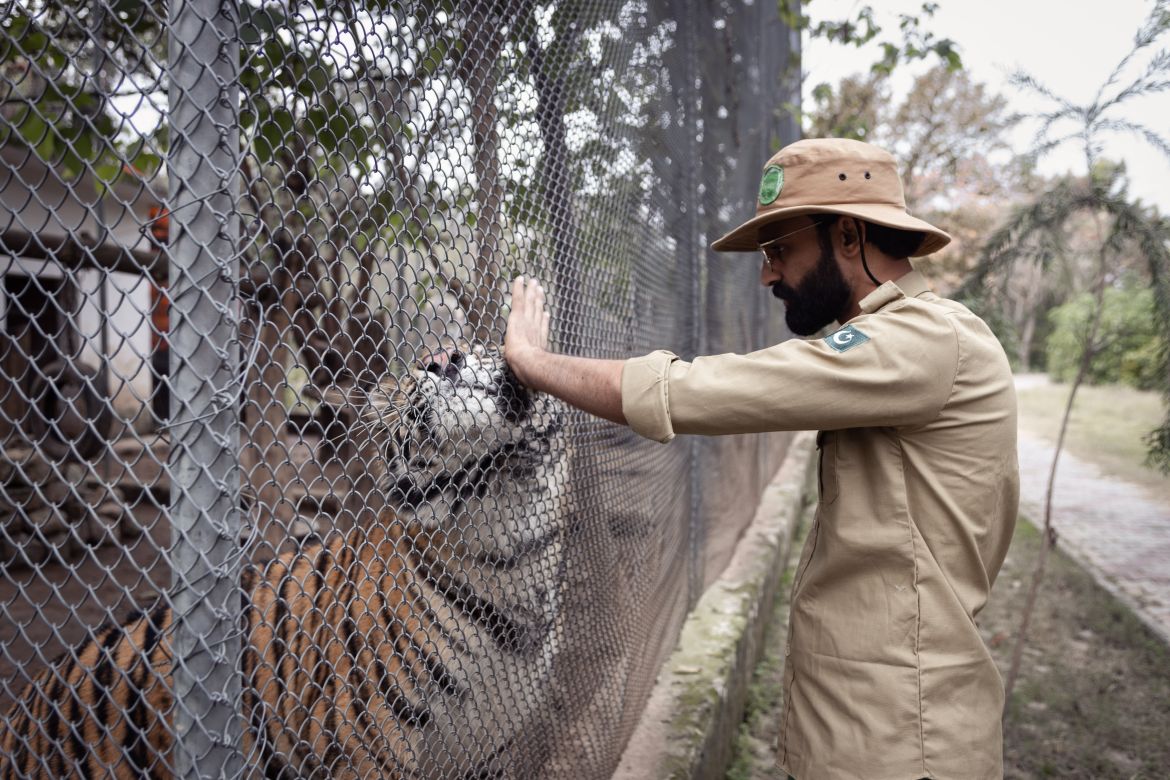 |
| IWMB ranger Anees Hussein greeting Baboo at the Margalla Wildlife Rescue Center. |
Zoos have provided people a chance to view wild animals for centuries. For many, it is a form of convenience without having to step out of their comfort zone and travel to faraway lands, where the animals they come to see roam free. Although zoos allow visitors to witness wild animals in awe, they have been subjected to controversy over the years. Not only do they deprive the animals of their freedom, but some have gained notoriety for the mistreatment of the animals. One of these controversial facilities was Pakistan's Islamabad Zoo. Formerly known as Marghazar Zoo, it opened in 1978 and was initially a refuge for chinkaras (Indian gazelles) and leopards living in the neighboring Margalla Hills before it started bringing in more animals and attracting visitors. From 2008 to 2010, the zoo underwent an extensive upgrade as a recreational area and wildlife sanctuary. This extension not only included animal enclosures, but also educational and research facilities.
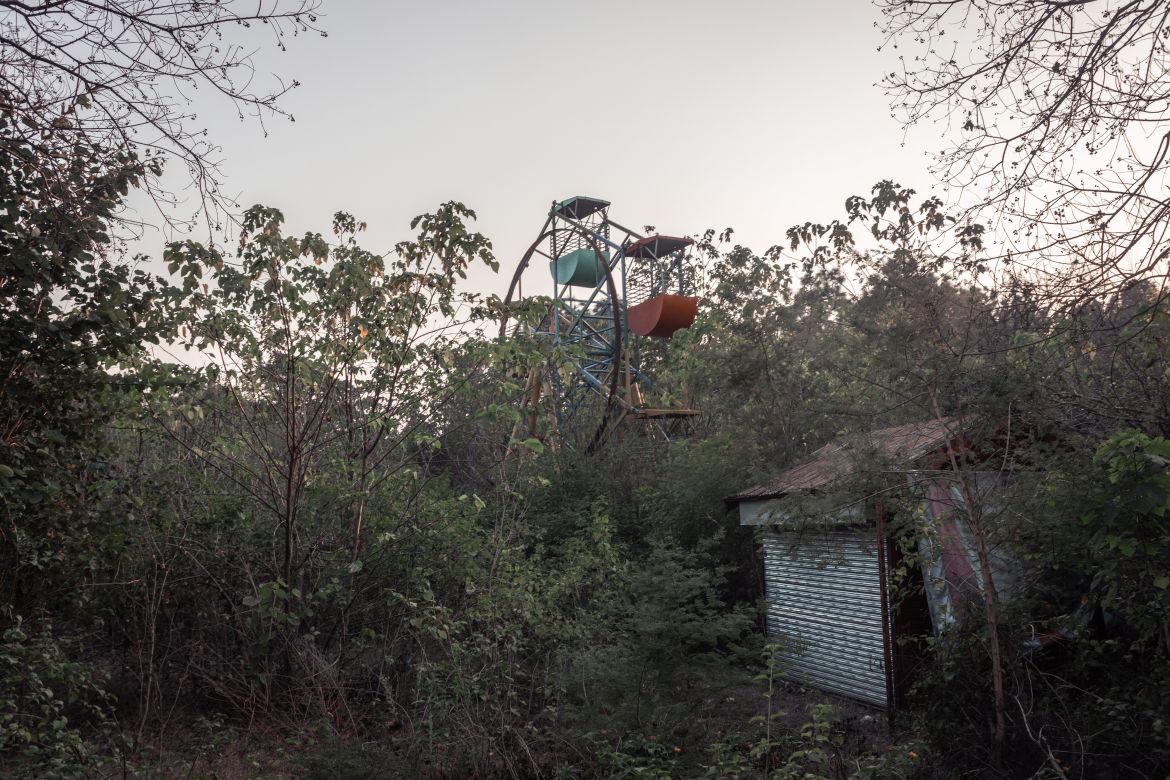 |
| Remains of Islamabad Zoo: A disused ferris wheel and a food stall amongst overgrown vegetation |
However, despite making beneficial developments, Islamabad Zoo came into negative spotlight in September 2016 when an Asian elephant named Kaavan became mentally ill as a result of being chain-bound for the past twenty years. Originally from Sri Lanka, Kaavan's life at the zoo began in the mid-1980s and in 1990, he received a female elephant named Saheli as his mate. Unfortunately, tragedy struck when Saheli died in 2012 due to an injury in one of her legs. Saheli's death, combined with being kept in horrendous conditions, took a heavy toll on Kaavan's mental health as he exhibited signs of distress such as continuous head-bobbing. Rather than take proper steps to help Kaavan, the zoo staff kept him chained subjecting him to a great deal of negligence. Kaavan's neglect generated international attention and prompted a freedom campaign led by singer Cher. At the same time, Islamabad Zoo came under scrutiny regarding the health and well-being of its animals. Investigations revealed that like Kaavan, many other animals were subjected to neglect by the staff - some of which resulted in death. For example, in July 2017, four lion cubs died after being given high intake of Welmingnch milk instead of lioness milk. Later that year, an ostrich died as a result of staff negligence. In August 2018, a wolf mauled six deer at the zoo's extension. Observers criticized the zoo for providing the animals with inadequate or bad quality food, placing and locking them in small cages, and their poor health.
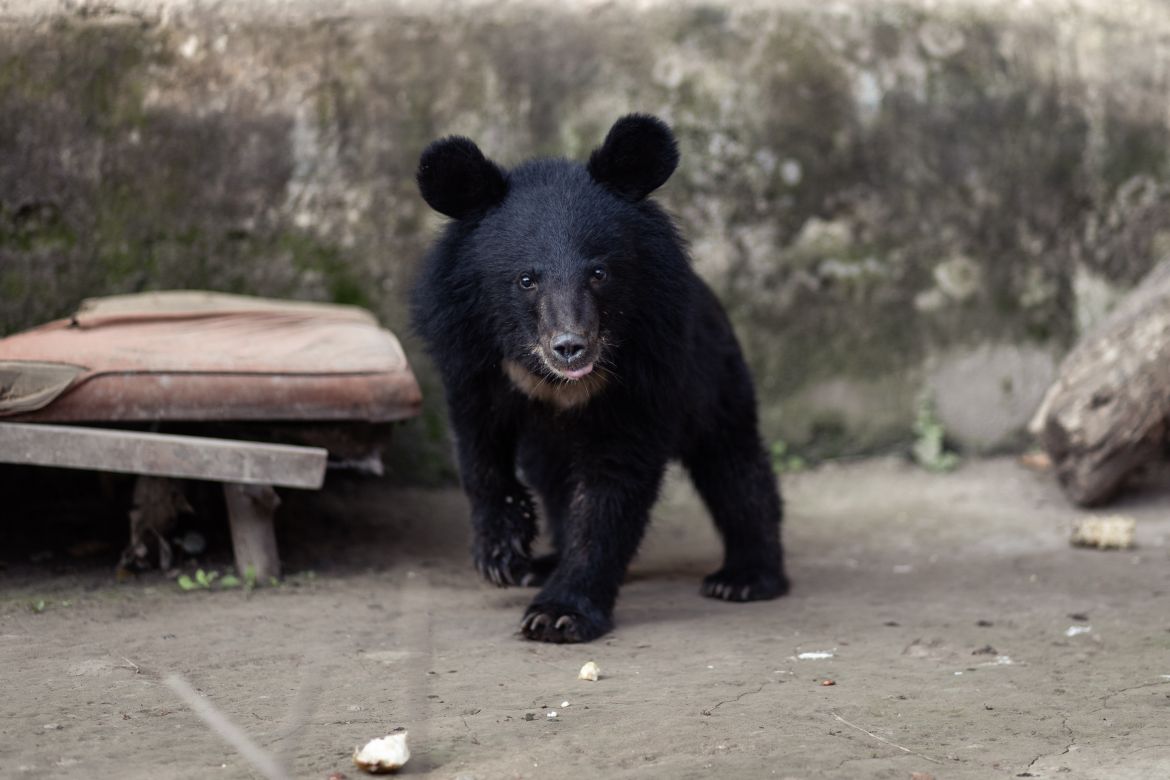 |
| Teddy, one of seven Asian black bears at the center. |
Islamabad Zoo's legacy ultimately came to an end in 2020 when the High Court ordered the zoo to be closed, following both local and international protests against the treatment of its animals. As a result, many animals, including Kaavan, were relocated to sanctuaries outside of Pakistan. That same year, the court ordered the zoo's grounds to be allocated to the Islamabad Wildlife Management Board (IWMB), a government organization in charge of conserving the wildlife of Margalla Hills National Park. In response to everyday reports of injured and trafficked wildlife, IWMB slowly began to use the former zoo's grounds as a rehabilitation center for rescued animals, in partnership with local animal rights groups and a non-profit conservation organization, Second Chance Wildlife. The center, known as Margalla Wildlife Rescue Center, had rescued more than 380 animals since 2020. These included Asian black bears, Indian pangolins, rhesus macaques, several species of birds, and a three-month-old Bengal tiger. In addition to receiving reports of injured animals, the center also conducts raids to rescue animals when hearing about criminal activities. Some of the animals were saved from poachers, while others, such as the bears, were used for entertainment purposes like "dancing" and fighting. One of the former residents at the center was a tiger named Baboo, who was found in a critical condition. According to IWMB ranger Anees Hussein, he had several bone fractures and been suffering malnutrition following early separation from his mother. Over the 14 months after Baboo's rescue, a small team of the center's staff and volunteers nursed him back to health. Yet as he grew, it became clear that the center could not provide Baboo with more space and company of other tigers. On February 14, after a long fundraising and administrative procedure, Baboo was successfully relocated to South Africa's Isindile Big Cat and Predator Sanctuary.
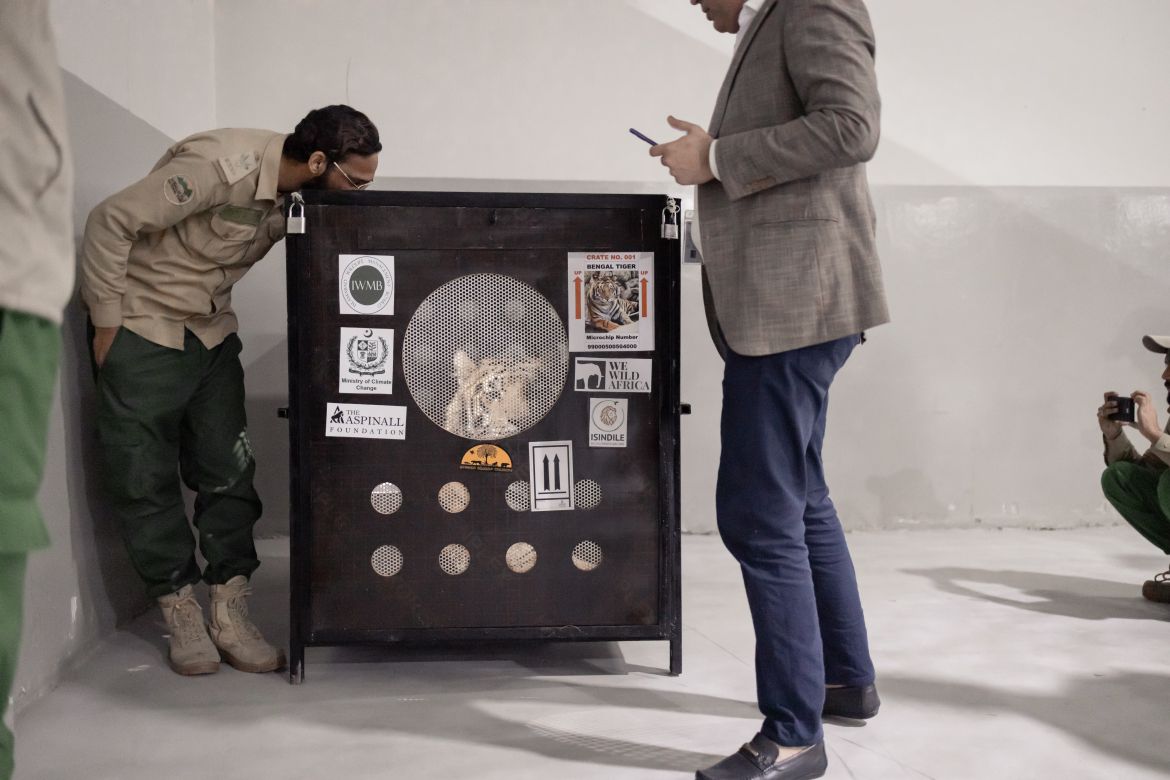 |
| Center staff and volunteers bidding farewell to Baboo at Islamabad International Airport's cargo wing. |
The IWMB is planning to establish a sanctuary that can forever house animals that cannot be released into the wild. However, there is an ongoing challenge of fundraising as the center depends on heavily on public donations to meet the increasing cost of maintaining the facilities and taking care of the animals. According to Second Chance Wildlife co-founder Leah Boyer, the center is "operating on a subsistence budget from one week to the next." The team hopes to continue expanding the center's capacity to rehabilitate wildlife, including big cats. For example, leopards are native to the area and incidences of human-leopard conflict are not uncommon. However, the center's mission is not supported by everyone. The Capital Development Authority (CDA), which had earlier managed the zoo, continuously tried to reclaim the grounds and parts of Margalla Hills National Park to reopen the old zoo. Nevertheless, it did not dispute the High Court's judgment and is not likely to win.
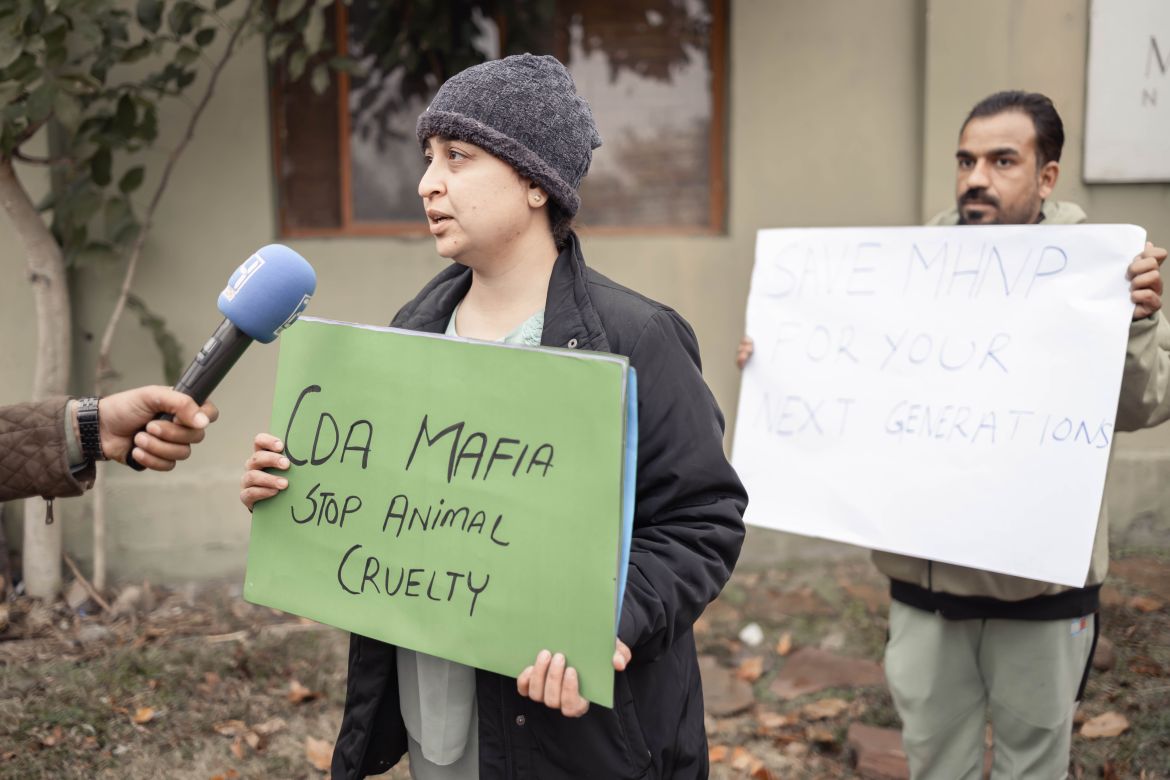 |
| Conservation activists protesting against CDA's attempt to reclaim the old zoo. |
I find it really amazing how a former zoo is being converted into a wildlife rescue center, especially when that zoo gained notoriety for the treatment of animals. Islamabad Zoo was a prime example of a zoological facility that imposed mistreatment and cruelty to its animals through sheer negligence by the staff that ultimately ends in death. Kaavan, who had been subjected to such mistreatment, was relocated to Cambodia where he now lives a better life following the zoo's closing. Although he is far from the pain and suffering he endured in Pakistan, he is truly a poster child of why zoos in general should focus on proper care and well-being of animals. I don't deny that zoos are far from the wide open spaces that provide wild animals unlimited room to move freely, but I strongly believe that zoo enclosures should be large enough for the animals to stretch their legs. They should also be filled with foliage to mimic various animals' respective native habitats and the animals should be provided with enrichment objects to encourage their wild survival instincts. The staff should be highly dedicated and have proper resources to care for the animals. Most importantly, zoos should provide visitors opportunities in an effort to educate, inspire, and enlighten on the importance of wildlife and conservation. Furthermore, they should support conservation by establishing special facilities to rehabilitate animals that are victims of some type of environmental or wildlife crime. Unfortunately, not many zoos adhere to such standards and there are still many such places all over the world that need to be improvised like in the case of Islamabad Zoo. Also, the Margalla Wildlife Rescue Center has been relying on public donations for fundraising. I strongly urge the government of Pakistan to provide funding to maintain the center's facilities and care of its animals. In addition, there are other zoos in the country where animals are suffering and measurements need to be implemented to establish more such rehabilitation centers and sanctuaries so that the animals don't have to be sent abroad.
No comments:
Post a Comment